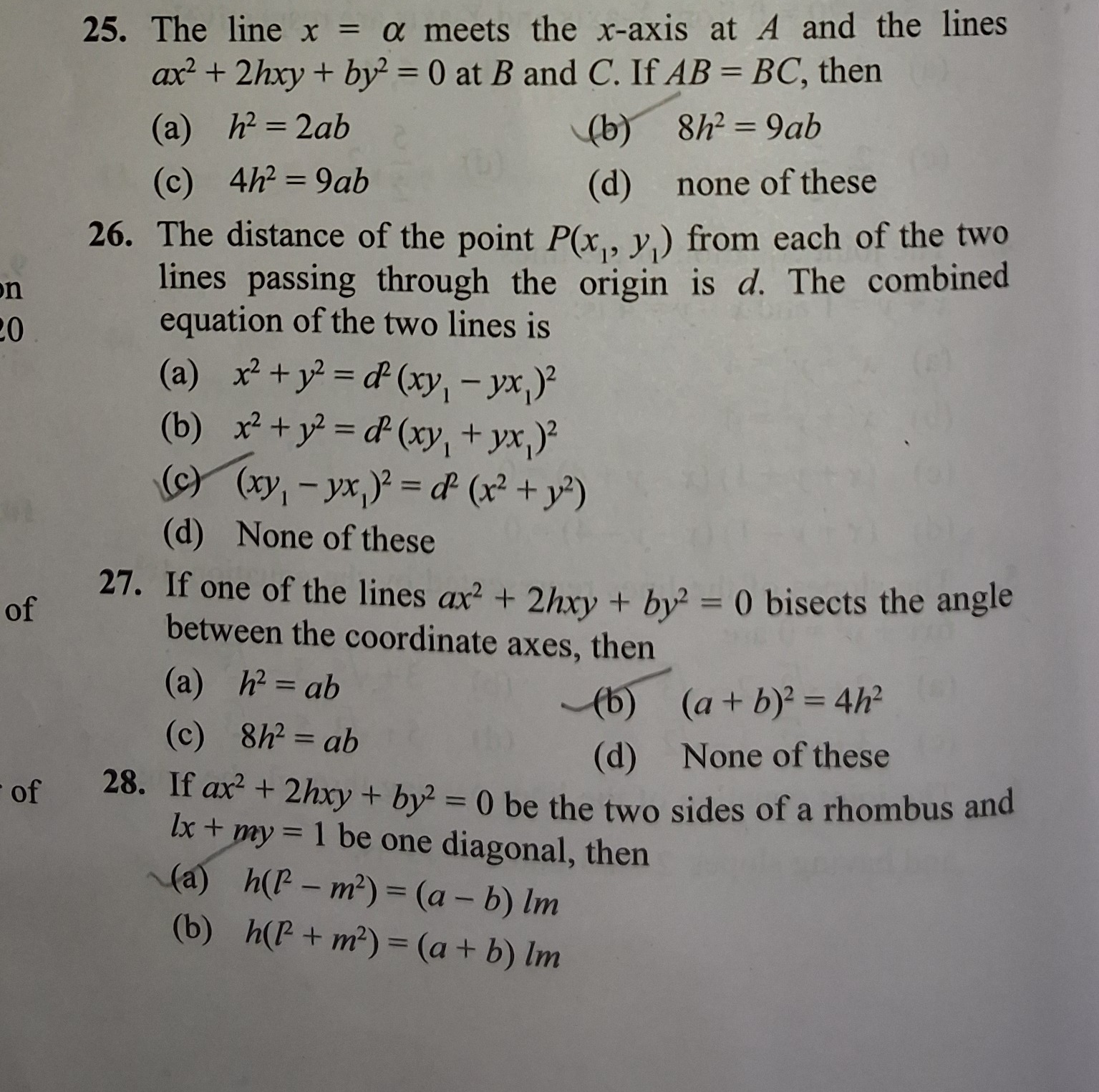Question
Question: The line $x = \alpha$ meets the x-axis at A and the lines $ax^2 + 2hxy + by^2 = 0$ at B and C. If $A...
The line x=α meets the x-axis at A and the lines ax2+2hxy+by2=0 at B and C. If AB=BC, then

h2=2ab
8h2=9ab
4h2=9ab
none of these
(b)
Solution
Let the combined equation of the two lines be ax2+2hxy+by2=0. These lines pass through the origin. The line x=α is a vertical line. Point A is the intersection of x=α and the x-axis (y=0). So, A=(α,0).
To find the points B and C where the line x=α intersects the pair of lines ax2+2hxy+by2=0, substitute x=α into the equation: aα2+2hαy+by2=0 Rearranging this as a quadratic equation in y: by2+(2hα)y+aα2=0
Let the roots of this quadratic equation be y1 and y2. These roots represent the y-coordinates of points B and C. So, B=(α,y1) and C=(α,y2).
The coordinates of A are (α,0). The distance AB=∣y1−0∣=∣y1∣. The distance BC=∣y2−y1∣.
The problem states that AB=BC. This implies ∣y1∣=∣y2−y1∣. This gives two possibilities:
- y1=y2−y1⇒y2=2y1
- y1=−(y2−y1)⇒y1=−y2+y1⇒y2=0
If y2=0, then one of the points (B or C) coincides with A. This means C=(α,0). If y2=0 is a root of by2+(2hα)y+aα2=0, then substituting y=0 gives aα2=0. Since α is typically non-zero (otherwise the line x=α is x=0, which is one of the lines if a=0), we must have a=0. If a=0, the original equation of the pair of lines becomes 2hxy+by2=0⇒y(2hx+by)=0. The lines are y=0 and 2hx+by=0. If a=0, then 8h2=9ab becomes 8h2=0, which implies h=0. If a=0 and h=0, the equation is by2=0, which means y=0. This is a single line, not a pair of distinct lines. Thus, a=0, and therefore y2=0.
So, we must have y2=2y1. From the quadratic equation by2+(2hα)y+aα2=0: Sum of roots: y1+y2=−b2hα Product of roots: y1y2=baα2
Substitute y2=2y1 into these equations: y1+2y1=−b2hα⇒3y1=−b2hα⇒y1=−3b2hα y1(2y1)=baα2⇒2y12=baα2
Now, substitute the expression for y1 from the first relation into the second relation: 2(−3b2hα)2=baα2 2(9b24h2α2)=baα2 9b28h2α2=baα2
Since α=0 and b=0, we can cancel α2 and one b: 9b8h2=a 8h2=9ab
